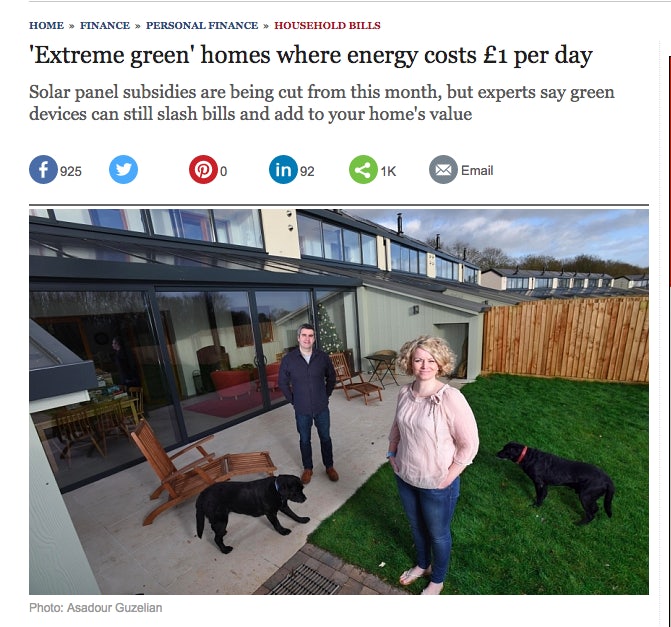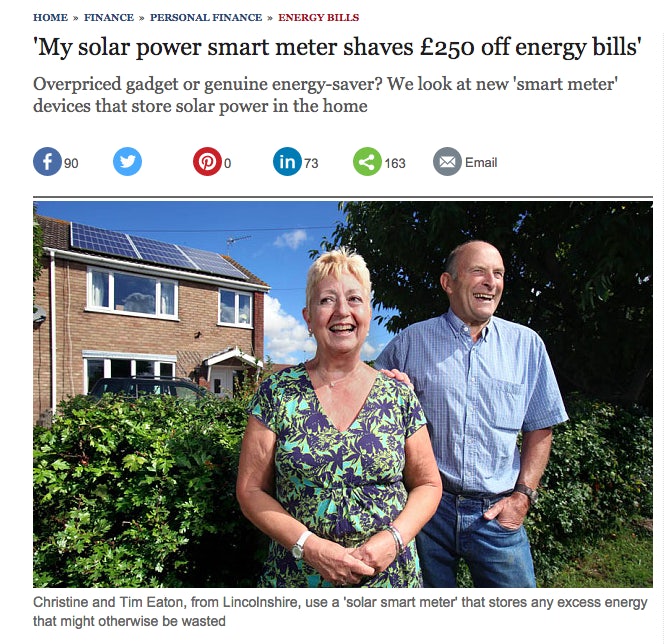On the third floor of a converted mill in the heart of Nottingham’s creative Lace Market, an inspired 23 year old Digital PR exec stares into her MacBook Air and ponders over how to begin her next blog post all about how to write a case study…
OR
This week’s blog post will be written on a MacBook Air and will focus on the benefits of writing a great case study…
As a reader, which of these openings entices you to consider investing in a MacBook the most?
My guess is the first one. Why? You’ve been dropped straight into the real-life of another person, who appears to need the named product to succeed in her job at a cool agency in the creative hub of a city…
The product, in this case, a MacBook has been placed within a context that appeals to your emotions, perhaps you can identify with the scenario described, or perhaps you would like to achieve it. Studies have shown that decision making, including those involved in purchasing products, are emotional and not logical.
Now put yourself in the head of a journalist. Which sentence sounds more like a potential story, rather than a sales pitch? Which is closer to the human interest stories that generate hundreds of thousands of readers and social shares? Which one would be more likely to add spark to to that lifeless article that you’re struggling with? No. 1 wins again.
The first sentence has all the qualities of a well written product case study. It describes a person, their location, occupation and emotions, which all build the story around the product mentioned within the sentence and make a reader associate this product with a real-life scenario that they can identify with, or may aspire to.
Boasting aside, by writing a case study around your client’s product, you can boost the success of your Digital PR process at the following three stages: pitching, readership and outcomes, or conversions.
Write a case study for journalists and pitch perfect
Journalists write stories for a living: for most specialisms, real-life events and the humans that are affected by them are likely to be the basis of every single article they write. You’d be wrong to think that this interest in real-life stops with news and crime however, all writers need to differentiate their articles from the competing publication and ensure that it’s their article that creates the social media buzz: it can often be the human hook that makes the difference.
Write a case study about the placement of your client’s product within a real-life complex, including photos and videos of the product in situ as well as comment from the people who are benefiting from the product, and you can present journalists with this ‘real-life, human hook’ on a plate. If you put the work in, save journalists lots of time and make their life easier, you’ll increase your chances of being the ‘chosen one’ from that list of email pitches and of your client’s product gaining coverage.
For example, if your client manufactures an eco-tech gadget, you’ll likely be pitching to eco-savvy journalists who are fascinated by the efforts being made to reduce emissions and prevent further damage to the environment.
How many times have you been told, “Sorry, but we’ve already covered that topic” or “that’s old news now”, when pitching?
A great case study is the best come back to these replies. It enables you to add a ‘real-life edge’ to a data driven or legislation based news story, which can both add new life to a story and encourage social shares by readers who have identified with the human: this is all good news for journalists.
For example, a new development of eco-homes in Lincolnshire feature a range of eco-products and have been designed to achieve a low daily energy cost. Could be interesting, but where’s the hook?
“I have a case study about a couple of teachers living in one of these homes and how they only pay a £1/day energy bill.’
Now you’re listening, along with the journalist and most importantly, the consumer.

Writing for your reader, or target consumer
Using product case studies alongside your product has the ability to plant your client’s product in the minds of your target consumer and suggest that purchasing it would increase their quality of life.
I like to call it the ‘Joneses Effect’ and it works like this….
Mr X scans an article in the personal finance section of the Telegraph/ The Guardian/ The Times on his evening commute. The article is about how Mr Y, who is also 46 with 2 children and working in finance, has made his life ‘so much easier’ by investing in a [insert home product here.]
30 minute later and Mr X is recalling his day to his partner over dinner, he mentions Mr Y and how he has stopped limescale build up around his home by buying a [insert home product.]
1 hour later and Mr X receives confirmation of his new purchase from yourchosenhomeproduct.com after clicking on the link within the online article he was scanning on the tube.
Success and sale.
The conversion rate is unlikely to be this quick, Mr X may visit the website on a few separate occasions and read some customer reviews before clicking buy, but the the fundamental idea is correct: humans buy into human lives, and the products that make them easier! By pitching a real-life story featuring your product to the media, you increase your chances of not only securing coverage, but of that coverage leading to a conversion on your client’s eCommerce site.

Measuring case studies – tracking and analysing conversions
An important part of any Digital PR strategy is measurement and it’s possible to quantify the increase in website traffic and revenue as a result of your case study strategy. Using Google Analytics it’s possible to track the amount of referral traffic that has arrived at your client’s site via a link within an online article featuring a case study; you can also analyse upward trends in direct traffic in the days following the publishing of a case study in print or a non-linking media platform.
A recent case study featured on Yougen Blog has brought 418 new users, or potential customers, onto the client’s website and has generated over £500 in revenue in the two months since its publication.
Write a great case study in 3 steps
1.Targeted
Your case study needs to focus on your target demographic and how they are benefiting from the product as they go about their everyday lives. Audience research and persona profiling are good places to start when deciding on what scenario and story to build around your product to lead to conversions made by your target consumer.
2. Detailed
Your case study should be full of information about how the product improve the life of your ‘case study human’. When writing answer questions such as, where is it installed in their home? Can it be controlled while having lunch at the office? How much have the case study family saved on their annual energy bill through using this product?
Don’t forget to include important product information, such as model name, colour and dimensions, but balance this with descriptions of the ‘sleepy’ nature of the hometown of your case study family and even the name of their family pet! While this may seem too much information, it’s these more trivial details that prevent can encourage the reader to identify with the protagonist and sell the story to the press.
3. Authentic
Detail is great, but only when it’s beneficial and presented in a natural format. While pet names and village life may seem too much information, it’s these more trivial details that prevent your case study being read as a sales pitch by journalists and potential consumers alike.
Now go forth and write a case study to win both coverage and sales. If you need further inspiration, here’s a good example.



